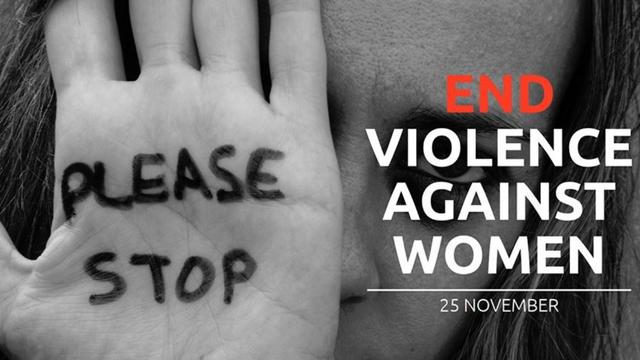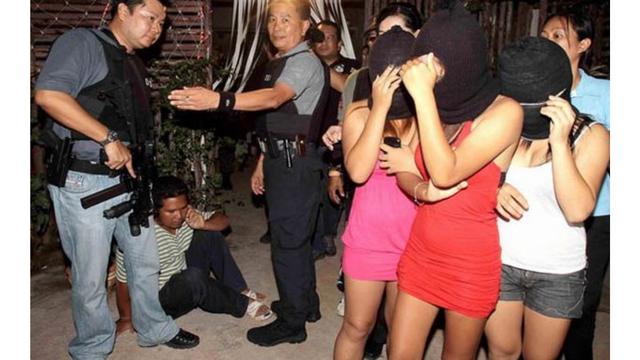The problem of gender-based violence continues to plague all continents. Tai Ji Men’s proposal of a World Prayer Day may help solving it.
by Hans Noot
*Conclusion of the webinar “Eradicating Violence Through a World Prayer Day and Solving the Tai Ji Men Case,” co-organized by CESNUR and Human Rights Without Frontiers on November 25, 2022, International Day for the Elimination of Violence Against Women.

- Introduction
- Gender inequality in the USA
- Gender Based Violence in South Asia
- Gender inequality in China
- Gender based violence in Latin America
- EU Gender Equality Strategy
- Tai Ji Men and the World Prayer Day
Introduction
Our webinar today connects elimination of violence against women, and solving the Tai-Ji-Men case. We deplore how the Taiwan tax authorities have been abusing their powers against the Tai-Ji-Men for the past 26 years—more than a quarter of a century. One wonders how a government could let this happen.
We, in particular, thank the Center for Studies on New Religions, as well as Human Rights Without Frontiers. We have heard their distinguished experts speak about the topic today, as well as the testimonies from the victims about a deplorable situation in Taiwan. The videos that we have seen have clarified even more. And much can, and should be said. Let me conclude with just a few remarks.
Increasingly the world is being confronted with the phenomenon of violence against women and girls. Only five years ago we heard on the news of the #MeToo movement, with women openly complaining against sexual intimidation. Consequently, people are more aware and some perpetrators are brought to justice.
But exploitation of women is broader than sexual intimidation, and has been an issue ever since recorded history. By calling for the International day for the Elimination of Violence against Women annually on November 25, the United nations has started a global campaign. And while women, in particular, are the victims by far, it is part of the call for a day of gender equality—a day for activism against gender-based violence.
Throughout the world, we continue to see gender-based violence, and the threat of gender-based violence amplified when an emergency hits. The U.S. Government has long recognized the increased prevalence and risk of gender-based violence, particularly targeting women and girls, when disasters or conflicts strike.
Sustainable Development Goal #5 charges nation-states to “achieve gender equality and empower all women and girls.” One element requiring attention is gender-based violence, which continues to be a serious threat. While most often referring to violence in the context of sexual assault, domestic and intimate partner violence, and human trafficking, anthropologists have recently called for an expanded understanding of gender-based violence that explores the ways in which gender creates vulnerability and susceptibility.
Gender inequality in the USA
Gender inequality in the United States has been diminishing throughout its history, and significant advancements towards equality have been made beginning mostly in the early 1900s. However, despite this progress, gender inequality in the United States continues to persist in many forms, including the disparity in women’s political representation and participation, occupational segregation, and the unequal distribution of household labor. The alleviation of gender inequality has been the goal of several major pieces of legislation since 1920 and continues to the present day. As of 2021, the World Economic Forum ranks the United States 30th in terms of gender equality out of 149 countries.

A recent study by Heather Hlavka demonstrates that school-age girls as young as eleven have already normalized experiences of sexual violence and assault, particularly in the school setting. Early childhood would therefore seem to be a key period to address healthy intimate relationships and respect for sexual and bodily autonomy. Research demonstrates that age-appropriate and frank antiviolence and sexual health curriculum are effective in improving sexual health and preventing pregnancy, but the culturally fraught nature of sex-education debates in the US makes it difficult to implement in many school districts.
Gender Based Violence in South Asia
1. Violence against women in South Asia is one of the deadliest forms of violence in Asia, yet it is dramatically overlooked by governments and policymakers.
2. Most countries in Asia have laws against domestic violence, but nearly all laws exclude unmarried intimate partners.
3. Limited awareness, capacity, and lack of political will hinder women’s legal protection. Laws against domestic violence and other forms of gender-based violence are just the starting point.

4. Violence against women and girls extends throughout the life cycle. Excess child mortality rates and a deep-rooted bias against girls often begins in the womb. Gender biases within a household have implications on health and education outcomes, with girls and women often faring worse than boys and men on relevant indicators. One of the most egregious forms of violence against girls is child marriage. South Asia sees the highest rates of child marriage, which is in turn associated with lower education outcomes, inferior employment opportunities, and higher rates of domestic violence. Globally, including in Asia, legal protections against child marriage are limited, and many countries that have adopted 18 as the legal age for marriage still allow exceptions in cases of parental or judicial consent. Additional challenges such as low levels of female labor force participation and insecure public spaces both result from and perpetuate environments in which violence against women can persist. Though most countries across Asia have laws against sexual harassment—which may occur in or outside of the workplace, in public and private spaces—the laws vary in scope and coverage. These myriad factors and forms of gender-based violence compound to compromise the safety and well-being of women and girls and must be addressed holistically for prevention and response efforts to be effective.
Gender inequality in China
In 2019, China ranked 39th out of 189 countries on the United Nations Development Program’s Gender Inequality Index (GII). Based on a survey implemented in a county in central China, the researchers found it is common for women to experience gender-based violence, especially violence at the hands of intimate partners. About half of men surveyed reported inflicting physical or sexual violence on their female partners. One in five men reported having raped a partner or non-partner woman.
The physical, mental and reproductive health of the female and male respondents were found to be significantly associated with women’s victimization and men’s perpetration of intimate partner violence. Gender-based violence, including intimate partner violence, is a construction of the social-ecological system. Four elements that are key to hegemonic masculinity are identified: male decision-making, male reputation, violence and heterosexuality. By positing the four elements as standards that define a “real man,” the domination of men over women is naturalized and legitimized. It is necessary to foster other non-violent and more equitable masculinities.
Gender based violence in Latin America
Latin America has adopted a two-fold approach to tackling gender violence. First, the creation of the only regional commitment to eradicating gender violence, which clearly establishes the responsibilities of states to safeguard women’s rights. Second, countries in the region have implemented a range of mechanisms at the national level to tackle specific forms of violence, such as domestic violence and femicide laws, the creation of gender observatories, as well as programs for building safer cities for women.

EU Gender Equality Strategy
Not forgetting unnamed regions in my presentation, here is an example of the EU Gender Equality Strategy:
“The goal is a Union where women and men, girls and boys, in all their diversity, are free to pursue their chosen path in life, have equal opportunities to thrive, and can equally participate in and lead our European society. The key objectives are ending gender-based violence; challenging gender stereotypes; closing gender gaps in the labor market; achieving equal participation across different sectors of the economy; addressing the gender pay and pension gaps; closing the gender care gap and achieving gender balance in decision-making and in politics. The Strategy pursues a dual approach of gender mainstreaming combined with targeted actions, and intersectionality is a horizontal principle for its implementation. While the Strategy focuses on actions within the EU, it is coherent with the EU’s external policy on gender equality and women’s empowerment. On 8 March 2022, the European Commission adopted a new EU-wide proposal for a directive to combat violence against women and domestic violence, which “seeks to introduce targeted minimum rules on the rights of this group of crime victims, and to criminalise the most severe forms of violence against women and of cyber violence. A milestone achievement is the Directive on gender balance in corporate boards, which seeks to improve the gender balance in corporate decision-making positions in the EU largest listed companies. After 10 years of negotiations, the Directive has been finally adopted on 22 November 2022.”
Tai Ji Men and the World Prayer Day
Due to special programs, legislation, and media attention violence against women is seeing a downtrend. Much of the problem lies at culturally defined values and practices. Cultures in which people are raised and in which they live play a dominant role in how people define the value of women and men. It is for that reason that we strongly advise to keep raising awareness of the problem.

A call for help from above must be part of the solution. Whether we believe in an intelligent divine being, or in nature, practically all humans are aware that we, as individuals are unable to solve the problem by ourselves. We can define the concept of “prayer” as a plea of help to higher powers. A global day for prayer, October 16, as proposed by Dr. Hong Tao-Tze of Tai-Ji-Men, is a wise and prudent part of the solution. It will be an opportunity to pick up the golden chain we see in Rembrandt’s painting “Aristotle Contemplating the Bust of Homer,” as Dr. Introvigne explained in this webinar.
We certainly endorse Dr. Hong’s proposal of a World Prayer Day as a cry for help to tackle the human-made issue of violence against others, as well as all other forms of unfair discrimination—including the abuse perpetrated by tax authorities against the vulnerable, of which the Tai Ji Men case is an egregious example.
Source: Bitter Winter

